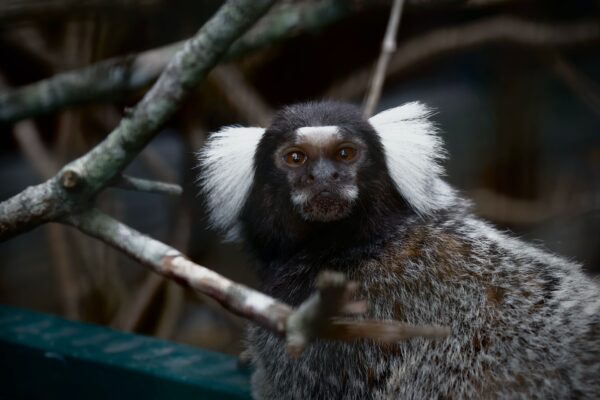The pygmy marmoset (Cebuella pygmaea) is a small New World monkey native to the Amazon rainforest in South America. It is the smallest species of monkey in the world, measuring just 4-6 inches in length and weighing between 3.5-5 ounces. The pygmy marmoset has a unique appearance with its long tail, large eyes, tufted ears and silky fur.
Physical Traits
The pygmy marmoset has a distinct physical appearance that sets it apart from other primates. Its fur is usually yellowish-brown or grayish-brown with white patches on its face and chest. It has long claws on its hind feet which help it climb trees and cling onto branches. Its tail is longer than its body and helps it balance when jumping from tree to tree.
Life Span
Pygmy marmosets have an average lifespan of 8-10 years in the wild, but can live up to 15 years in captivity.
Habitat
Pygmy marmosets are found in tropical rainforests of the western Amazon Basin in South America, including Brazil, Colombia, Peru, Ecuador and northern Bolivia. They make their home and living in forest trees or bamboo thickets near rivers or streams.
Diet
Pygmy marmosets are omnivorous animals that feed mainly on insects such as ants, beetles and caterpillars as well as fruits, flowers and nectar from plants like bromeliads. They also eat gum from tree bark which provides them with essential nutrients such as protein and carbohydrates for energy.
Reproduction
Pygmy marmosets breed during the female’s postpartum estrus which occurs approximately 3 weeks after giving birth, producing offspring every 5 to 6 months. The gestation period lasts for about 4 months after which time the female gives birth to 1-3 young at a time (twins are most common). The young are born fully furred with their eyes open and able to cling onto their mother’s fur shortly after birth.
Conservation Status
The pygmy marmoset is listed as Least Concern by the IUCN Red List due to its wide distribution range across South America and stable population trend over recent years despite some localized threats such as habitat loss due to deforestation for agriculture or cattle ranching activities.
Interesting Facts
• Pygmy marmosets have been known to use tools such as sticks or leaves to probe into crevices for food items like insects or eggs • They communicate using various vocalizations including chirps, clicks and whistles • Pygmy marmosets have been observed grooming each other’s fur for social bonding purposes • They can jump up to 16 feet between branches!


